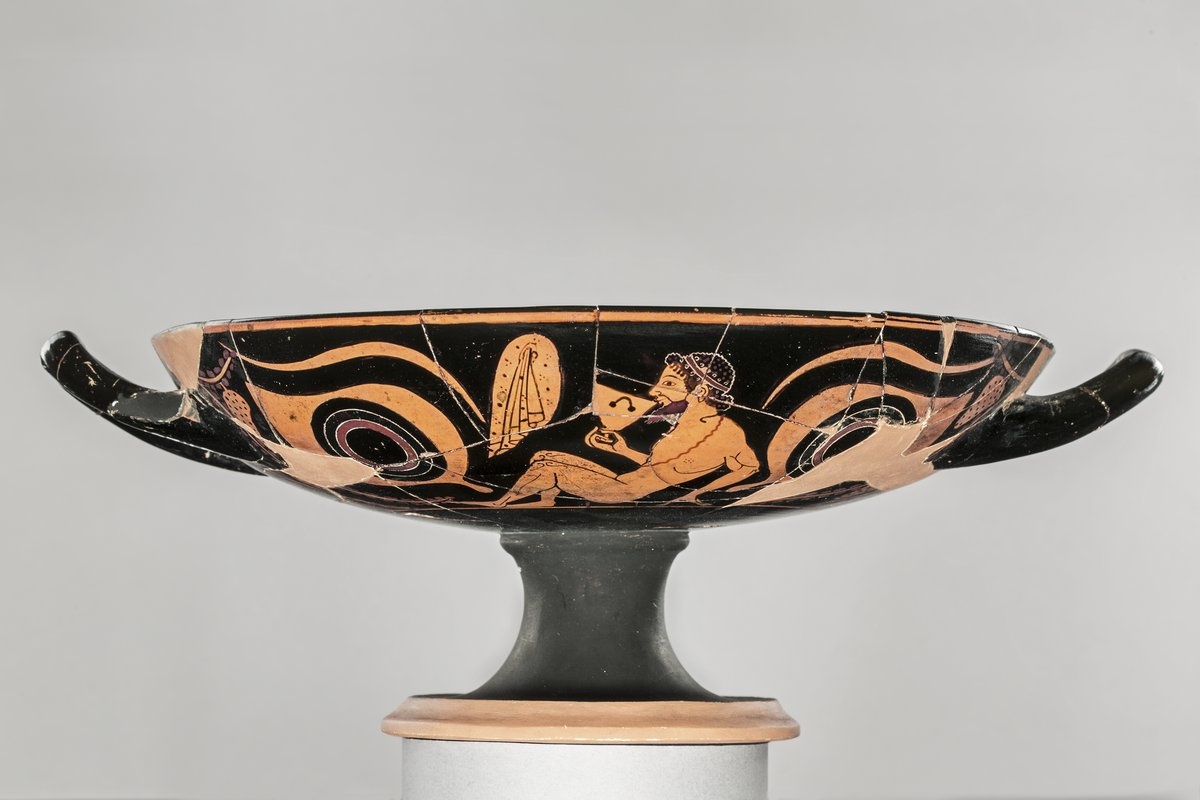In Athenian vase painting around 525 BC red-figure decoration appeared alongside the already customary black-figure style. The so-called Andokides Painter was among the pioneers of red-figure pottery, though he was trained in the black-figure tradition. The large amphoras for storing wine were his favourite vase type, and he decorated one side in the old technique, and the other with the new. He only made a few kylixes, which were used as drinking cups at banquets.The anonymous artist was christened after Andokides, the potter who made and signed some of the vases decorated by him. He himself never signed his works, so they can be identified only by a thorough examination. The Budapest kylix is undoubtedly by the Andokides Painter: the characteristic profiles with a slightly protruding and sometimes downward-turning lower lip, the peculiar bulging shapes of the heads, the elbows and ankles are all features typical of him. The Budapest kylix is markedly different from his other cups decorated in red-figure, as it is much smaller to those. Its size is usual for black-figure kylixes, as is the Gorgon’s head on the inside of the cup. Decorating the outside with eyes also customary with black-figure kylixes, whereas on red-figure pieces alongside the eyes the palmette was an indispensible element. The Andokides Painter thus straddled two eras: he used the forms and part of the decorative system of black-figure pottery combined with the red-figure technique.Szilvia Lakatos
en

